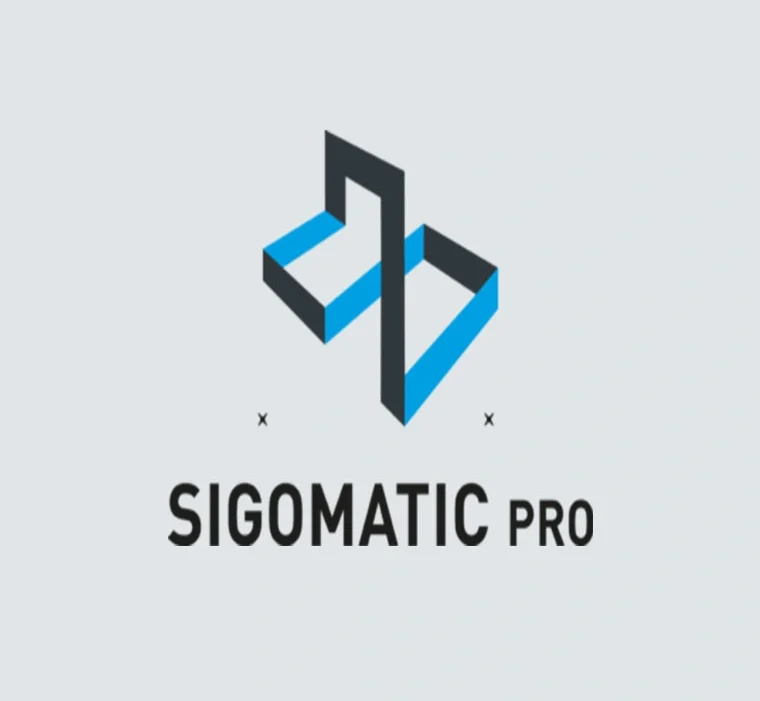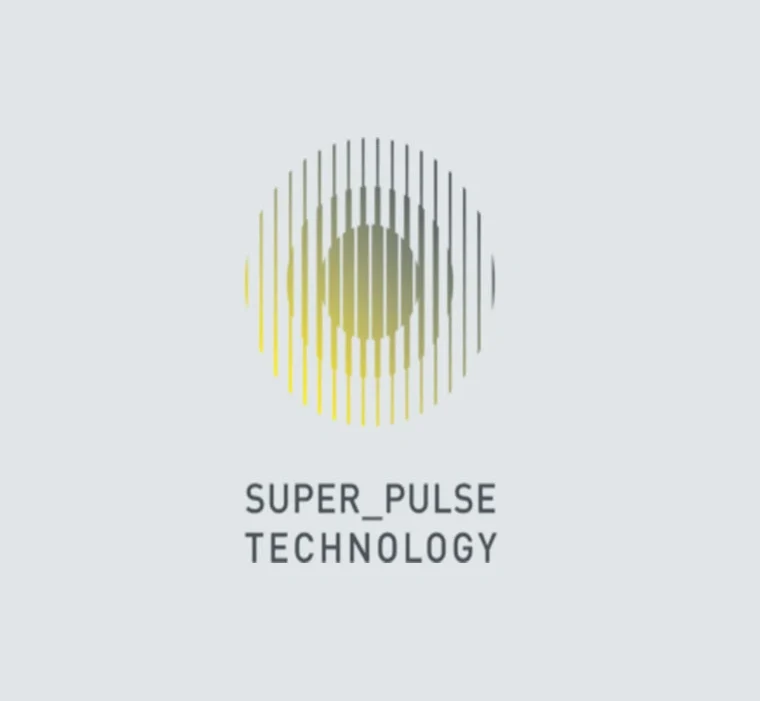Sigma Laser Welding Software – Overview & Best Practices
Sigma Laser’s welding software is a high-precision control solution designed to operate and manage laser welding systems with efficiency, traceability, and automation readiness. It serves industries requiring precise material joining, such as electronics, medical devices, battery packs, and automotive components.
Core Features
1. User Interface & Operation
- Intuitive, touchscreen-enabled UI
- Visual programming of weld paths
- Real-time feedback for operators
- Quick-access toolbar for commonly used functions
2. Parameter Control
- Adjustable parameters: laser power, frequency, pulse width, focus
- Save/load job files and parameter sets
- Compatible with different laser types (fiber, pulsed, CW)
3. Monitoring & Diagnostics
- Real-time process monitoring (temperature, position, error status)
- Alerts and interlocks for safety and system protection
- Diagnostic logs for troubleshooting
4. Integration & Communication
- Connectivity with external systems (PLC, MES, ERP)
- Interfaces: USB, Ethernet, or RS-232
- Optional API for third-party automation systems
5. Automation & Robotics Compatibility
- Supports CNC tables, gantry systems, and robotic arms
- Sequencing tools for automated workflows
- Step-by-step execution or continuous operation mode
6. Documentation & Traceability
- Automatic logging of welding parameters per job
- Export options for CSV, PDF, or database systems
- Supports ISO-compliant quality documentation
Best Practices
1. Interface & Usability
- Design UI for minimal operator training
- Enable multilanguage support for international teams
- Use visual aids like 2D/3D path previews and heat maps
2. Parameter Libraries
- Build and maintain a library of material-specific welding recipes
- Tag each entry with use cases (e.g., aluminum 0.3mm tab, steel enclosure weld)
3. Sensor-Based Closed-Loop Control
- Integrate seam tracking cameras, pyrometers, or laser displacement sensors
- Enable auto-adjustment of laser parameters based on sensor feedback
4. Traceability & Logging
- Log all operational data for each weld (time, energy, operator, etc.)
- Archive and retrieve logs for auditing or optimization
5. Cybersecurity
- Role-based access control (RBAC) for different user levels
- Protect configuration and firmware with encryption and secure login
6. Remote Management
- Enable remote diagnostics and firmware updates
- Offer cloud connectivity or secure VPN access for offsite monitoring
7. Modularity
- Allow scalable upgrades (e.g., from semi-auto to full-automation)
- Use a plugin architecture for additional capabilities like AI defect detection
Future-Forward Capabilities (Optional Add-ons)
| Feature | Description |
| AI-based Optimization | Predict and correct weld errors using machine learning |
| Cloud Dashboards | Monitor system health, output, and quality from any location |
| AR/VR Training | Operator training via virtual simulation environments |
| Digital Twin | Simulate weld processes before execution |
Sigma Laser Welding Software Suite
Including SIGOMATIC – Smart Process Control System
Introduction
Sigma Laser’s software ecosystem is engineered to deliver precise, efficient, and intelligent laser welding operations. The system’s backbone is its core welding software, while SIGOMATIC serves as a cutting-edge module for real-time quality control and smart welding feedback. Together, they form a robust platform for mission-critical applications in medical devices, battery systems, automotive, aerospace, and microelectronics.
Overview of SIGOMATIC
SIGOMATIC is Sigma Laser’s proprietary quality monitoring and feedback system for laser welding. It enables inline weld inspection and closed-loop control by analyzing optical process signals (such as reflected light intensity or emissions) and reacting in real time.
Key Objectives:
- Ensure weld quality consistency
- Minimize defective parts and rework
- Enable predictive error detection
- Comply with high-regulation industry standards
Core SIGOMATIC Features
1. Inline Process Monitoring
- Real-time capture of light intensity emitted during each weld pulse
- Non-destructive weld inspection with no need for external sensors
- Applicable for highly reflective materials (e.g., copper, aluminum)
2. Signal Evaluation
- Pulse-by-pulse signal recording
- Analysis of deviations from reference patterns (ideal weld)
- Configurable tolerance ranges for pass/fail evaluation
3. Automatic Fault Detection
- Auto-stop or alert on signal deviation
- Flagging of suspect welds for post-process review
- Built-in logic for classifying faults (e.g., misfires, incomplete welds)
4. Traceability and Documentation
- Every weld gets a unique ID, timestamp, and status (pass/fail)
- Log files can be stored locally or sent to MES/ERP systems
- Export options for quality audits: PDF, CSV, database API
5. Closed-Loop Control (Advanced Option)
- Dynamic parameter adjustment based on feedback signal
- Adaptive control of laser power, duration, or pulse frequency
- Seamless integration with automation workflows
How SIGOMATIC Works
- Reference Weld Setup
An ideal weld is recorded to generate a “reference signal curve.” - Live Monitoring
During operation, SIGOMATIC captures each pulse and compares it with the reference. - Deviation Analysis
Signal amplitude, frequency, and shape are checked within set tolerances. - Result Action
Depending on outcome:- ✅ Pass → Continue process
- ⚠️ Warning → Mark for review
- ❌ Fail → Trigger stop or flag defective part
Best Practices for Using SIGOMATIC
1. Set Clean Reference Signals
- Use high-quality, consistent sample welds to create a reliable reference profile.
- Avoid noise or signal artifacts during reference capture.
2. Optimize Tolerances
- Define narrow but realistic deviation thresholds to reduce false positives.
- Calibrate tolerances for different material thicknesses and geometries.
3. Use Signal Libraries
- Maintain a signal profile library for different product types
- Label them based on materials, laser settings, and part numbers
4. Enable Smart Logging
- Integrate with factory data systems to log weld evaluations in real time
- Attach log files to part serial numbers or barcodes
5. Train Operators on Signal Behavior
- Educate technicians to interpret signal trends and recognize common anomalies
- Provide access to sample signal waveforms for each defect type
Benefits of Integrating SIGOMATIC
| Benefit | Description |
| Real-time Quality Control | Detect issues before they impact product integrity |
| Waste Reduction | Prevent defective parts from continuing down the production line |
| Process Optimization | Refine laser parameters based on signal trends |
| Regulatory Compliance | Meet ISO, FDA, and automotive traceability standards |
| Increased Throughput | Confidently run machines at full speed with real-time assurance |
SIGOMATIC vs. Traditional Weld Monitoring
| Feature | SIGOMATIC | Traditional Visual Inspection |
| Real-Time Analysis | ✅ Yes | ❌ No |
| Automation Ready | ✅ Fully | ❌ Manual only |
| Objectivity & Repeatability | ✅ High | ❌ Operator-dependent |
| Feedback Loop for Correction | ✅ Dynamic Adjustments | ❌ None |
| Compliance Logging | ✅ Built-in | ❌ External paperwork required |
Integration Architecture
SIGOMATIC can be integrated into:
- Sigma Laser’s standard software interface (as an additional module)
- Robotic cells or semi-automated welding stations
- MES / SCADA systems via API or Ethernet
Documentation & Standards
- Traceability: ISO 9001, ISO 13485, IATF 16949
- Weld Quality: ISO 13919-1 (Laser Weld Imperfection Tolerances)
- Data Management: Compatible with FDA 21 CFR Part 11 (for medical)
Summary
SIGOMATIC transforms Sigma Laser’s welding system into an intelligent, closed-loop platform. By monitoring and analyzing optical process signals in real time, it dramatically improves welding accuracy, reliability, and regulatory readiness.
Whether you’re building EV battery packs or precision medical implants, SIGOMATIC ensures that every weld is traceable, inspectable, and high-quality—without interrupting production.
Excellent choice. Sigomatic Pro is Sigma Laser’s advanced software for intelligent automation in laser welding systems. Below is a comprehensive Wiki-style documentation expanding your current software knowledge base to include Sigomatic Pro — structured, scalable, and optimized for engineers, integrators, or industrial clients.
Sigomatic Pro – Advanced Laser Welding Software
Introduction
Sigomatic Pro is the flagship laser welding control software developed by Sigma Laser GmbH. It is purpose-built for high-precision industrial applications requiring advanced automation, traceability, and flexibility. Sigomatic Pro acts as the central brain of Sigma Laser welding systems — offering powerful features such as smart programming, job tracking, and seamless integration with robots and external systems.
Key Capabilities
1. Advanced Motion Control
- Full control of multi-axis CNC and robotic systems
- Precise coordination of positioning tables (X/Y/Z) and rotation axes
- Supports servo motors, gantry systems, and industrial robotics
2. Smart Job Management
- Graphical programming of welding paths and sequences
- Import of CAD, DXF, or CSV job files
- Job queue and batch production modes
3. Intelligent User Interface
- Clean touchscreen-friendly design with status indicators
- Contextual UI adapts based on job or hardware setup
- Customizable dashboards and quick-access controls
4. Welding Process Optimization
- Real-time adjustment of laser parameters during execution
- Supports dynamic pulse width, power, and pattern modulation
- Integrated weld path smoothing and correction tools
5. Comprehensive Data Logging & Traceability
- Tracks operator, machine ID, job ID, material specs, and timestamps
- Export logs to Excel, CSV, or QMS databases
- Barcode/QR code-based job recall and part tracking
6. Full Automation & Robotics Integration
- Seamless connection to robotic arms (KUKA, FANUC, Yaskawa, etc.)
- Supports external signal triggering and I/O logic
- Camera-guided positioning and seam detection options
Best Practices for Using Sigomatic Pro
1. Project Setup & Recipe Management
- Use CAD import for accurate geometries
- Store recipes in grouped folders based on material and job type
- Use versioning control for parameter tuning
2. Parameter Fine-Tuning
- Record and analyze welding heat profiles with onboard sensors
- Utilize “trial run” modes to simulate toolpaths without active laser
- Validate energy input per mm based on material conductivity
3. Sensor Fusion & Adaptive Welding
- Combine vision sensors, seam tracking, and thermal imaging
- Enable closed-loop control based on reflectivity or gap detection
- Automate weld corrections in real time
4. Automation Workflow Design
- Script job sequences: clamp → align → weld → verify → unload
- Use PLC handshake signals for safe and synchronized motion
- Implement buffer queues for uninterrupted production
5. Security & Access Control
- Multi-user login with hierarchical privileges (operator, QA, admin)
- Track all changes to settings, recipes, and logs
- Enable auto-logout for idle systems to prevent tampering
6. Maintenance & Diagnostics
- Built-in maintenance schedules and system health monitoring
- Diagnostic pages for motor status, IO testing, and laser activity
- Automatic alert system for consumables, cooling, and interlocks
Competitive Advantages
| Feature | Benefit |
| Robotic Integration | Cuts cycle time and improves repeatability |
| Real-Time Monitoring | Prevents defects and reduces material waste |
| Barcode-Based Workflows | Enables fast and accurate part tracking |
| Customizable Automation | Scales from semi-automatic stations to Industry 4.0 cells |
| Audit-Ready Logging | Ideal for medical, aerospace, and battery pack compliance |
Sample Workflow Diagram (Descriptive)
[ Start Job ]
↓
[ Load Workpiece ]
↓
[ Positioning System Aligns ]
↓
[ Vision System Locates Weld Path ]
↓
[ Laser Welding Begins ]
↓
[ Real-Time Monitoring Adjusts Parameters ]
↓
[ Weld Completion & Quality Check ]
↓
[ Save Log & Report ]
↓
[ Next Job / Repeat ]
System Requirements
| Component | Requirement |
| OS | Windows 10/11 (64-bit), Linux (custom) |
| Display | Touchscreen recommended (minimum 15”) |
| Connectivity | Ethernet, RS-485, USB 3.0, I/O ports |
| Compatible Devices | Sigma Laser Systems, CNC tables, Industrial Robots |
Notes
- Sigomatic Pro is modular – designed to be scalable for small batch manual systems or full industrial automation lines.
- Software customization is available – integrators can request custom modules, multi-camera support, or vertical industry features (e.g., EV battery welding, jewelry, sensors, etc.)
Here’s an expanded Wiki-style knowledge entry on Remote Diagnosis based on the content at Sigma Laser – Remote Diagnosis and best practices in industrial laser service systems.
Remote Diagnosis – Sigma Laser Welding Systems
Introduction
Remote Diagnosis is a core module in Sigma Laser’s software ecosystem, designed to provide real-time remote support, error analysis, and system troubleshooting for laser welding systems. This capability enhances uptime, reduces maintenance costs, and ensures that both integrators and end-users receive fast and efficient support from Sigma Laser’s service team — regardless of geographic location.
Key Features of Remote Diagnosis
1. Live Remote Access
- Secure, real-time access to the laser system by Sigma Laser technicians
- Requires internet connectivity via Ethernet or Wi-Fi
- Allows live screen sharing, parameter inspection, and log access
2. Error Detection & Analysis
- Remote review of diagnostic logs and machine events
- Analysis of system warnings, fault codes, or welding inconsistencies
- Root cause analysis based on system status and sensor feedback
3. Firmware Updates & Configuration
- Push firmware upgrades remotely
- Adjust system configurations and default welding parameters
- Restore factory settings if required
4. System Health Monitoring
- Real-time check of component status: cooling, optics, sensors, motion systems
- Preventive maintenance suggestions
- Status visualization via online dashboards
5. Secure Connectivity
- Encrypted VPN or remote desktop tools (e.g., TeamViewer/AnyDesk)
- Access is only granted with customer permission and password
- Complies with GDPR and industrial cybersecurity best practices
Security Protocols
| Protocol | Purpose |
| Two-step Authentication | Protects access with dual login |
| User-Controlled Access | Remote access only upon client authorization |
| Session Logs | All remote sessions are logged and traceable |
| Firewall Friendly | Works without complex port forwarding setups |
Best Practices for Using Remote Diagnosis
Preparation by the Customer
- Ensure the system is connected to the internet via a stable network
- Verify access rights and schedule support sessions in advance
- Maintain logs and screenshots for any irregularities before contacting support
During the Diagnosis Session
- Keep an operator or technician present at the machine for manual confirmation
- Allow screen/control sharing only during active support
- Monitor and log changes made remotely for internal records
Post-Support Process
- Receive a remote support report summarizing actions taken
- Update internal service logs based on resolved issues
- Apply preventive recommendations provided by the Sigma Laser team
Remote Diagnosis Use Cases
| Scenario | Remote Diagnosis Role |
| Unexpected Errors | Quick identification of faults or software bugs |
| Parameter Misconfiguration | Expert tuning without on-site presence |
| Firmware Compatibility Issues | Apply updates or rollback to stable versions |
| New System Commissioning | Guide integrator teams remotely during setup |
| Routine Health Checks | Proactive system inspection to prevent downtime |
Benefits of Remote Diagnosis
- Faster Problem Resolution: Cuts downtime from days to hours
- Cost Efficiency: Eliminates or reduces on-site service visits
- Global Support: Access expert help from Sigma Laser regardless of time zone
- Continuous Improvement: Data collected helps improve future software versions
Super Pulse Technology (SPT) – Sigma Laser
Overview
Super Pulse Technology (SPT) by Sigma Laser represents a significant innovation in laser welding performance. It enables the generation of ultra-high peak power pulses within microsecond durations, resulting in cleaner, deeper, and more precise welds—especially in challenging materials such as copper, aluminum, and reflective metals.
This advanced pulsing technique enhances penetration, reduces spatter, and improves metallurgical bonding, particularly in high-reflective and conductive materials commonly used in industries such as battery production, electronics, and aerospace.
Key Technical Characteristics
| Parameter | Details |
| Pulse Shape | Rectangular, trapezoidal, or custom-defined |
| Pulse Duration | Microsecond to millisecond range |
| Peak Power | Ultra-high peaks exceeding conventional pulsed lasers |
| Energy Stability | Precisely controlled energy per pulse |
| Material Compatibility | Copper, aluminum, gold, stainless steel, nickel, etc. |
| Penetration Profile | Deep, narrow, and clean with minimal heat distortion |
Functional Benefits of SPT
1. Superior Weld Quality
- Deep fusion with minimal porosity or microcracks
- High strength-to-weight welds in thin materials
- Excellent surface finish with little or no rework required
2. Advanced Material Handling
- Welds high-reflective materials like copper (e.g., in EV battery tabs)
- Maintains thermal control even in heat-sensitive components
3. Low Spatter Operation
- Highly controlled pulse shapes eliminate metal ejection
- Essential for clean-room and precision manufacturing environments
4. Reduced Heat-Affected Zone (HAZ)
- Minimal thermal load on surrounding material
- Prevents deformation in microcomponents or assemblies
5. Enhanced Repeatability
- Ultra-precise timing ensures identical pulse profiles every cycle
- Ideal for automated and high-throughput systems
Integration with Sigma Welding Software
SPT is natively integrated into Sigma Laser’s software environment:
| Feature | Integration Capability |
| SPT Parameter Control | Adjust pulse height, duration, frequency via touchscreen UI |
| Multi-stage Pulsing | Define pulse sequences for pre-weld, main weld, and cooling |
| Recipe Management | Store SPT profiles for different metals and thicknesses |
| Visualization Tools | Simulated pulse profile display in real-time |
| Compatibility | Usable with CNC, robotic arms, or manual workstation systems |
Best Practices for Using SPT
🔹 1. Parameter Optimization
- Use short, high-intensity pulses for copper and reflective metals
- Tune frequency to balance heat input and pulse overlap
🔹 2. Material Testing
- Perform weld trials on sample materials to fine-tune SPT settings
- Use high-speed camera or metallurgical inspection to validate weld integrity
🔹 3. Advanced Programming
- Combine SPT with multi-pass strategies for thicker joints
- Integrate with seam tracking for continuous welds in automation
🔹 4. Quality Control
- Use pyrometry or inline sensors to monitor temperature stability
- Log each pulse’s energy and peak power for traceability
Industrial Applications
| Industry | Application Example |
| Battery Production | Copper or aluminum tab welding (EV battery modules) |
| Medical Devices | Micro-welding of stainless steel, titanium |
| Electronics | Connector and sensor welding |
| Aerospace | Aluminum and titanium component joining |
| Automotive | Busbars, cable lugs, and e-mobility components |
Summary
Super Pulse Technology (SPT) enhances Sigma Laser’s core software platform by offering:
- Higher energy concentration per pulse
- Superior weld quality in difficult metals
- Seamless integration into automated or manual systems
Together with Sigma’s intuitive interface and real-time control, SPT enables next-generation welding with high precision and repeatability across advanced manufacturing sectors.




